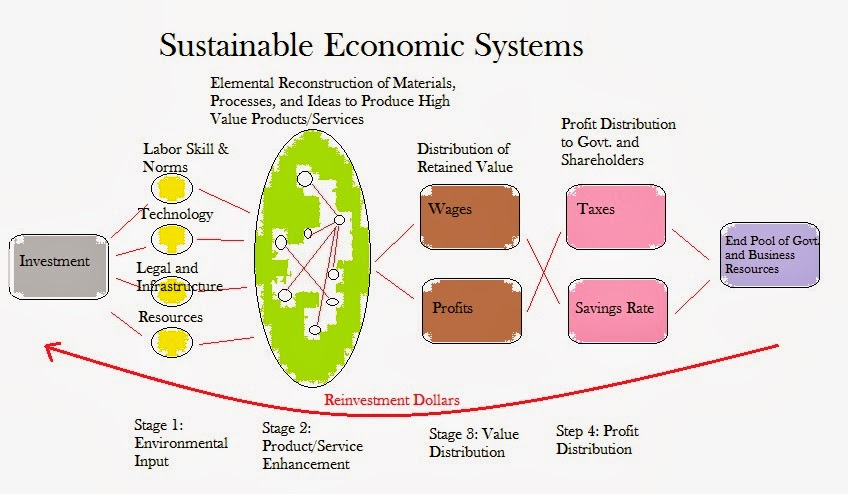Sustainable economic development is a process of investment,
value creation, and reinvestment to expand the economic engine. Those economic engines that are able to
provide a consistent and solid return on investment are able to draw in new
resources and investments that keep the circle of influence growing. The system
becomes a perpetual changing machine that develops new innovations and
efficiencies that translate into market impact.
To formalize this concept let us consider an example of an
investor that contributes $100 into a business venture in hopes of earning
higher revenue than what their local bank can offer. The success of a higher
return on investment is based within the ability to raise the value of that
money through new products and services that are sold on the international
market for a profit.
The ability to raise value is based in labor skill, the cost
of obtaining resources, the technology available to increase the productive
aspects of the system, and the legal infrastructure that allows such activities
to occur. Assuming that the inputs allow for value creation, it is up to the
decision makers to put these elements together in an innovative way that
develops something of higher value. Therefore, management abilities cannot be
ignored in this process.
The eventual return on sales will be used to pay labor,
investors, and other expenses. Money that is not used by labor for maintenance
or to repay back the initial investment is the profit that turns into labor and
investor saving rates (ROI). As this money will continue to lose value sitting
in a bank account due to such problems as inflation it is reinvested back into
the system. Part of the tax revenue,
like reinvestment, is used to improve upon the hub’s infrastructure (virtual or
physical) to create a more efficient value generation system.
Sustainable systems create perpetual value through
investment and return of value on that investment. Growing systems can draw in
new investments from outside sources that seek to also earn a higher return
rate. These investors may contribute money, build businesses within the
economic hub, or supply cheaper resources to that hub. It is possible to see the economic hub as a
value creation assembly line that seeks to draw in cheaper and better quality
resources.
Why is data so important? Data reduces investment risks. If
companies can formalize the market, find their place within it, and can make
forecasts they are much more likely to invest their resources into an economic
hub. Considering the multitude of places to invest money, and the lack of
information in other areas, the U.S. has an opportunity to capitalize on the
Internet age and encourage investments through transparency of government and
information. (Work in Progress)

No comments:
Post a Comment